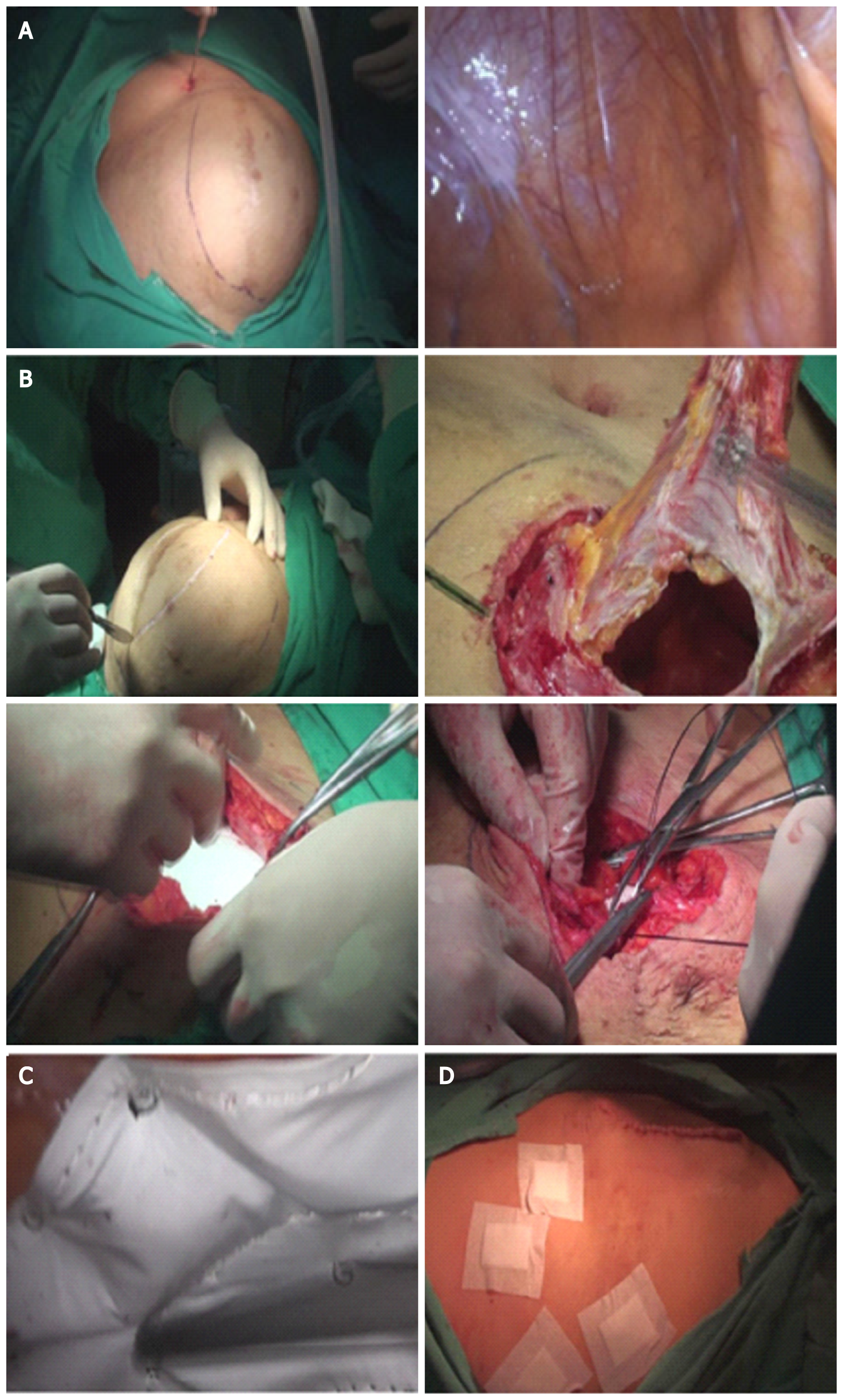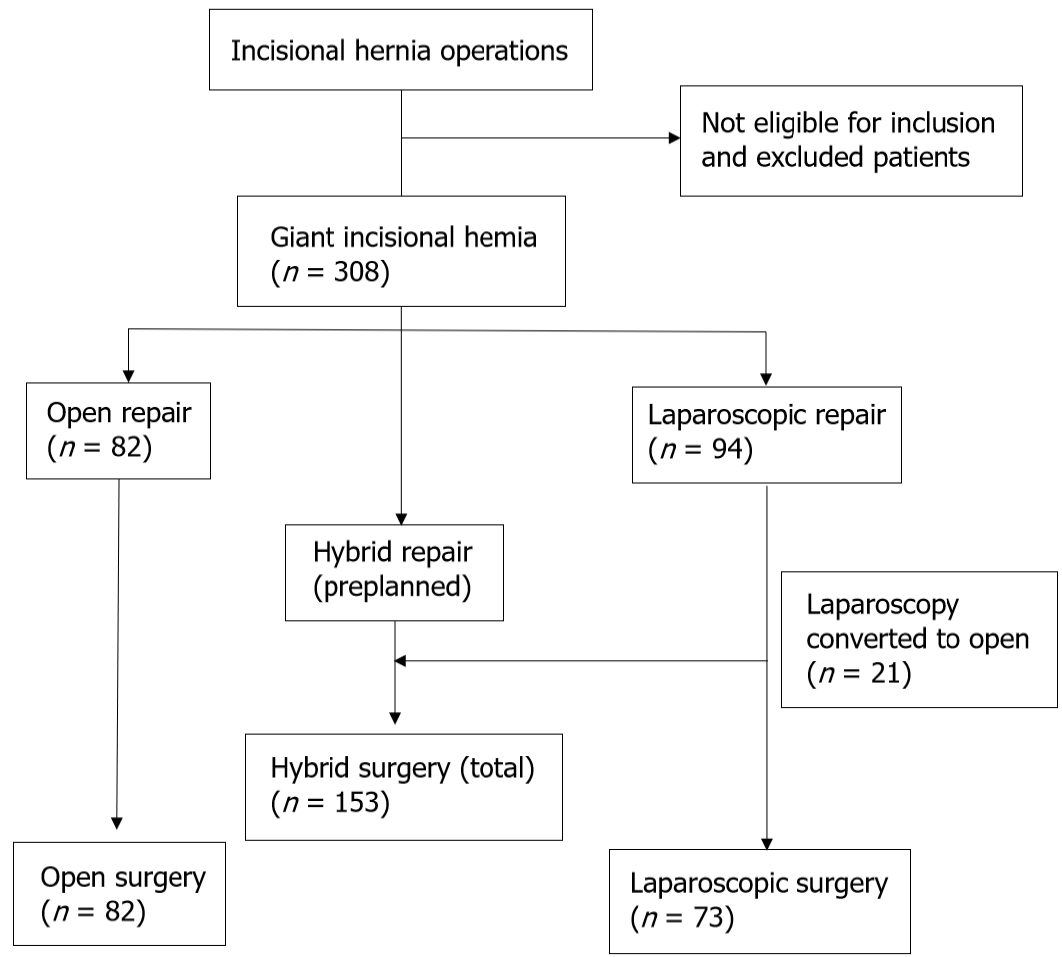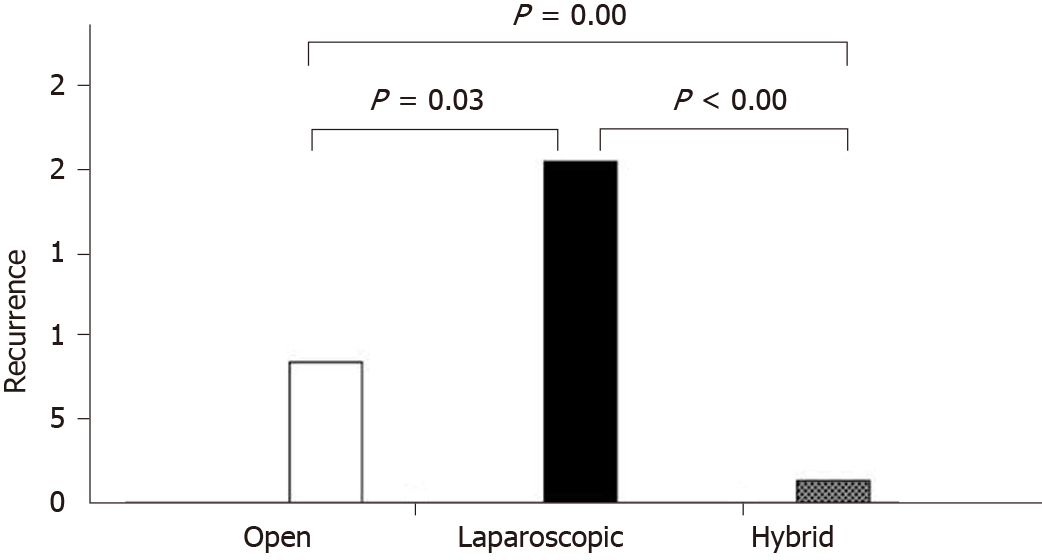Copyright
©The Author(s) 2022.
World J Clin Cases. Jan 7, 2022; 10(1): 51-61
Published online Jan 7, 2022. doi: 10.12998/wjcc.v10.i1.51
Published online Jan 7, 2022. doi: 10.12998/wjcc.v10.i1.51
Figure 1 The surgical process.
A: The hernia defect was dissected 5 cm beyond the exterior margin of the inner defect; B: A targeted fusiform incision (usually 4–8 cm long and 1–3 cm wide) was made at the weakest point of the hernia sac along the original incision line; C: A low-pressure (8–10 mmHg) pneumoperitoneum was reestablished, and the mesh was laparoscopically fixed with spiral tacks; D: The skin was closed with staples or a continuous 4-0 absorbable suture.
Figure 2 A flow diagram of patient inclusion.
Figure 3 This finding was significantly lower than that in the laparoscopic (12.
3%) or open groups (8.5%; P < 0.05).
- Citation: Yang S, Wang MG, Nie YS, Zhao XF, Liu J. Outcomes and complications of open, laparoscopic, and hybrid giant ventral hernia repair. World J Clin Cases 2022; 10(1): 51-61
- URL: https://www.wjgnet.com/2307-8960/full/v10/i1/51.htm
- DOI: https://dx.doi.org/10.12998/wjcc.v10.i1.51











